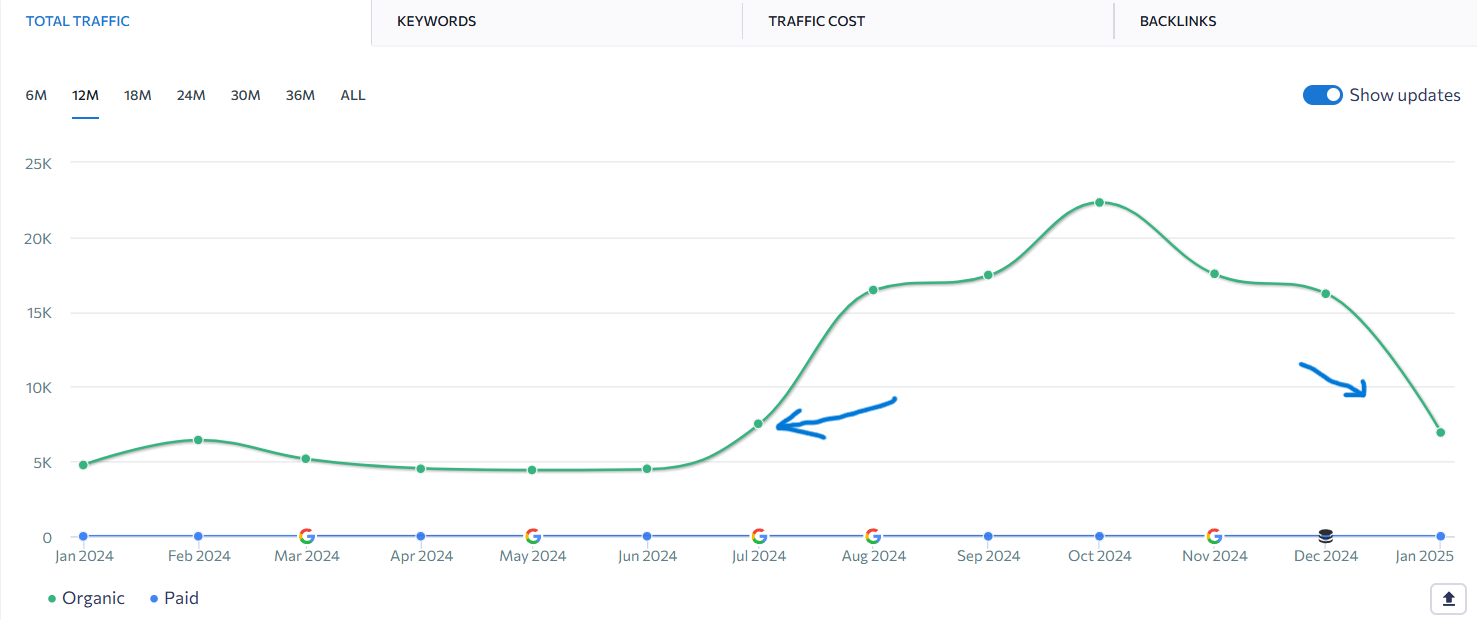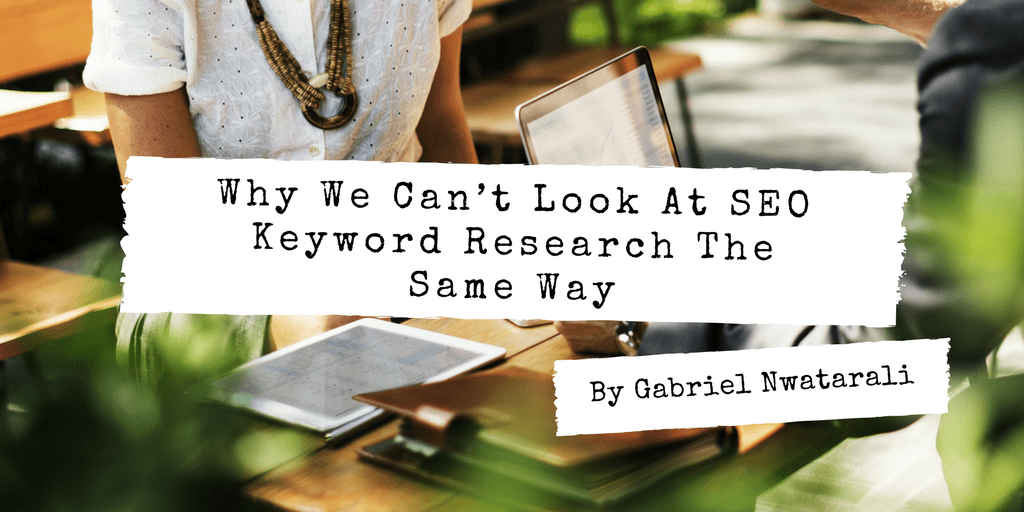Understanding SEO ranking factors is critical for achieving online visibility and growing website traffic. And as you may know, Google uses over 200 of them. While some factors are well-documented, others are based on anecdotal evidence.
This guide categorizes and details all known factors to provide insights for optimizing your website’s performance.
We’ll be focusing on Google because it’s the dominant search engine, and you can naturally align your site with the requirements of others. In other words, Google’s ranking factors are a good guideline since others share a similar evaluation process.
Best Way to Use SEO Ranking Factors
Understanding what the SEO ranking factors are is one thing; applying them effectively is another. The latter is what truly drives results.
Instead of optimizing for every factor at once, it’s best to take a strategic and systematic approach.
Here’s how you can get the most value.
1. Prioritize the Core SEO Pillars
While all SEO ranking factors contribute to search performance, focusing on the following key areas will yield the best results.
- Keywords: Identify the right keywords to ensure your content aligns with brand goals and what users are searching for, which drives qualified traffic to your site.
- Content Quality: Create original, in-depth, and valuable content that addresses user intent and offers a great user experience.
- User Experience (UX): Optimize navigation, aesthetics, mobile usability, page speed, and visual stability.
- Technical SEO: Optimize site architecture, sitemaps, and robots.txt to ensure crawlability. The fastest way to handle most of your technical SEO needs is to use an SEO-friendly CMS or website builder like WordPress.
- Backlinks: Build a strong, natural backlink profile by earning links from authoritative and relevant sources. Keep in mind that acquiring links too fast can hurt your domain.
2. On-Page Optimization for Quick Wins
On-page SEO ranking factors like meta titles, meta descriptions, H1 headlines, and internal links can have an immediate impact.
Best practices include:
- Placing primary keywords naturally within each area.
- Using descriptive, compelling copy to boost CTR (click-through rate).
- Strategically linking internally to guide users and distribute link equity.
3. Monitor and Adapt to Algorithm Updates
Google frequently updates its ranking algorithms, and staying ahead of changes is crucial. Keep an eye on updates that fall within the following areas.
- Core updates that impact content quality and E-A-T.
- Page Experience updates.
- Spam-related updates, such as Penguin and Panda.
4. Track Performance and Adjust
SEO is an ongoing process. You can maintain and improve your search visibility over time by continuously analyzing performance and adjusting.
Use data-driven insights to refine your strategy by:
- Tracking keyword rankings and organic traffic in Search Console and Google Analytics.
- Conducting regular SEO audits to identify gaps and opportunities with a good tool like SE Ranking.
- Testing different strategies to see what works best.
Domain Factors
Keyword Inclusion in Domain Name
Including keywords in your domain name is a relevancy signal. While not as impactful as it once was, it still contributes to Google’s understanding of your site’s focus. Ensure your domain name and branding align for the most benefit.
Domain Age
Older domains may have a slight advantage, as they’re often associated with established credibility. However, this is a minor factor compared to others, such as content quality and backlinks.
Domain Registration Length
Domains registered for multiple years signal long-term commitment, which may make your site appear more trustworthy. If you’re renewing yearly, consider changing your domain renewal length to 5 years at a time.
Subdomain Keywords
Keywords in subdomains can enhance relevancy for specific queries. For example, directory.techhelp.ca is a business directory.
Domain History
Frequent changes in ownership or a history of penalties can impact rankings, as Google may reset a domain’s authority. Also, domain penalties may carry over to a new owner, so check that a site is in good standing before purchase.
Exact Match Domains (EMDs)
While EMDs no longer provide significant ranking advantages, they can still be effective when combined with high-quality content and a good user experience.
Public vs. Private WhoIs Information
Domains with private registration may raise suspicion, but this factor alone is unlikely to penalize a site unless combined with other negative signals. For example, an eCommerce or other site with private registration that sells products/services but has no contact page with visible contact info may raise concerns.
Penalized WhoIs Owners
If the registered owner has a history of spam or penalties, Google might scrutinize other sites under the same ownership.
Country Code Top-Level Domain (ccTLD)
Using a ccTLD (.ca, .uk, etc.) can help a site rank well in specific countries but might limit its global reach. However, there are potential remedies, such as introducing multiple languages or earning backlinks from sites hosted in other countries.
Site-Level & Technical SEO Factors
Site Architecture
A well-structured site makes it easier for Google to crawl and index your content. Logical navigation improves user experience and may boost rankings.
SSL Certificate
HTTPS is a confirmed ranking factor that signals security and trustworthiness.
E-A-T: Expertise, Authoritativeness, Trustworthiness
Websites demonstrating high E-A-T, especially in sensitive niches like health and finance, are favored in rankings.
Sitemap Presence
XML sitemaps help Google and other search engines understand your site’s structure and index its pages more efficiently.
Web Host or Server Speed
As you know, fast-loading websites rank higher due to Google’s emphasis on page speed. A slow website host or server directly impacts how quickly your pages load.
Core Web Vitals (CWVs)
CWVs are a set of metrics that measure a website’s loading performance, interactivity, and visual stability. They are part of Google’s Page Experience ranking signals and focus on three key aspects:
- Largest Contentful Paint (LCP): Measures loading speed.
- First Input Delay (FID): Measures interactivity and responsiveness.
- Cumulative Layout Shift (CLS): Measures visual stability to ensure elements don’t shift unexpectedly.
Other signals in the same group include:
- Mobile Usability
- HTTPS Security
- Intrusive Interstitials (pop-ups and overlays that negatively impact UX).
Site Uptime
Frequent downtimes can harm your site’s ranking and user trust.
Unique and Valuable Content
Sites that consistently provide fresh, unique content tend to perform better than those with duplicated or generic material.
Crawlability
Ensuring that search engine bots can easily crawl your site is fundamental for indexing and ranking.
Robots.txt
A properly configured robots.txt file ensures that sensitive or irrelevant pages are not crawled unnecessarily.
Canonical URLs
Setting canonical URLs helps avoid duplicate content issues and consolidates ranking signals. It tells search engines which page is preferred or original whenever there’s a duplicate.
Error-Free Code
Valid HTML and the absence of coding errors contribute to a smoother user experience and better rankings.
Responsive Design
Websites that adapt seamlessly to different screen sizes perform better in search results, especially for mobile users.
Pagination
Properly implemented pagination ensures search engines can follow and index multi-page content.
URL Structure
Short, descriptive, and keyword-rich URLs are more SEO-friendly and easier for users to understand. For example, a page about SEO ranking factors could use domainname.com/seo-ranking-factors.
Keyword Placement in Headers
Strategic placement of primary and related keywords in H2 and H3 tags helps search engines understand the structure of your page.
Image Optimization
Alt text, descriptive file names, and proper compression ensure your images are accessible and SEO-friendly.
Structured Data Markup
Implementing schema markup helps search engines better understand your content and increases the likelihood of rich snippets.
Internal Linking
Effective internal linking between relevant pages improves site navigation and helps distribute link equity across your website.
Meta Tags
Optimized meta titles and descriptions not only improve click-through rates but also provide clarity to users and search engines.
Content Freshness
Regularly updating content may signal relevance and help maintain rankings over time.
Page-Level & Content Factors
Keyword in Meta Title
The meta title remains a strong on-page ranking signal. It’s also among the first things searchers see, so it should be optimized for click-through rate.
Placement of Keywords in Meta Title
Keywords positioned at the beginning of a meta title generally carry more weight than those placed at the end.
Keywords in Meta Description
While Google doesn’t use meta descriptions as a direct ranking factor, well-crafted descriptions improve click-through rates, which can influence rankings. For example, the algorithm may determine that your page is best if your link receives more clicks and most users don’t return to the SERP for the same query.
H1 Title Keywords
Including your target keyword in the H1 title helps reinforce a page’s theme. This also suggests that using the same headline for your H1 and Meta Title may be better.
Content Length
Longer, in-depth content tends to perform better in search results as it covers topics comprehensively. Fluff or content that’s purposely stretched without adding any real value can harm a page’s ranking.
TF-IDF Analysis
Google uses Term Frequency-Inverse Document Frequency to assess the importance of specific keywords on a page. This helps the algorithm determine whether your page aligns with user intent.
Latent Semantic Indexing (LSI) Keywords
Using LSI keywords enhances content context and helps search engines better understand its relevance. These are words or phrases that are semantically related to your primary keyword. For example, LSI keywords for “apple” could include “iPhone,” “MacBook,” or “fruit nutrition,” depending on the context.
Further, some people think LSI keywords are just synonyms, which isn’t true. Synonyms are words or phrases that have the same or similar meaning. For example, good, excellent, fine, and superb all mean the same thing.
Page Loading Speed
Page speed is critical for both user experience and SEO. Google uses real-world user data to assess loading times.
Mobile Optimization
Mobile-friendly websites tend to rank higher, especially on mobile search results—thanks to Google’s mobile-first indexing. This means Google prioritizes the indexing and ranking of the mobile version of your website.
Originality
Unique and original content avoids penalties and enhances rankings, especially in competitive niches.
Topical Relevance
Content that aligns closely with user intent ranks higher.
Grammar and Spelling
Well-written content with proper grammar signals professionalism and quality.
Table of Contents
Including a linked table of contents enhances user navigation and helps search engines understand the page structure.
Readability
Content written in clear, accessible language caters to a broader audience and aligns with Google’s preference for easy-to-read material.
Page Layout
A clean, user-friendly design with minimal distractions ensures a positive experience and aligns with Google’s quality guidelines.
Multimedia Usage
Using videos, images, and other media to supplement text improves user engagement and signals content richness.
Interactive Content
Elements like calculators, quizzes, and tools enhance user experience and time on site.
Broken Links
Pages with numerous broken links may be flagged as neglected or outdated, impacting rankings.
Ad Placement
Excessive or intrusive ads can harm user experience and rankings, especially above the fold.
User Interaction & Behavior Factors
Click-Through Rate (CTR)
Google uses CTR as a way to measure user satisfaction with search results.
Dwell Time
The time users spend on your page after clicking through from search results reflects content relevance and quality.
Repeat Traffic from Search Results
Sites that attract returning visitors may indicate value and user satisfaction.
Pogo Sticking
When users quickly return to search results after visiting your site, it signals that your content didn’t meet their needs.
Chrome Bookmarks
Pages bookmarked in Google Chrome may be a sign of user approval.
Comments and Engagement
User interactions, such as comments, indicate content quality and relevance.
Backlink & Webspam Factors
Domain Authority of Linking Sites
Backlinks from high-authority domains carry more weight and contribute significantly to rankings.
Page Authority of Linking Pages
The authority of the specific linking page influences how much ranking value (often referred to as “link equity” or “PageRank”) it passes to your site. The more authoritative the linking page, the greater the potential boost in rankings for the linked page. This concept applies to internal links, too.
Anchor Text Relevance
Anchor text with relevant keywords signals the context of the linked page. However, over-optimization of anchor text can lead to penalties.
Diversity of Linking Domains
Backlinks from various unique domains suggest a natural link profile and enhance credibility.
Contextual Backlinks
Links embedded within content, rather than in footers or sidebars, are more valuable for SEO.
NoFollow Links
While nofollow links don’t pass direct ranking value, a natural mix of follow and nofollow links signals authenticity in your backlink profile.
Link Location in Content
Backlinks placed higher within the main body of content are more impactful than those at the end or in footnotes.
Links from .edu and .gov Domains
Backlinks from educational or government sites are often viewed as more credible and authoritative.
Backlink Age
Older backlinks tend to carry more trust and ranking value than newly created ones.
Linking Domain Relevance
The relevance of the linking domain’s niche to your content enhances the backlink’s value.
Link Velocity
A steady backlink increase over time signals natural growth, while sudden spikes may indicate manipulative link-building tactics. This may trigger penalties from Google, which can cause traffic to look like this:

Co-Occurrences
The surrounding text of a backlink helps Google understand its context and relevance.
Low-Quality Links
Backlinks from spammy or low-quality sources can harm your rankings.
Link Farms
Participating in link farms (networks created solely for link exchanges) negatively impacts rankings.
Article Directories
Backlinks from low-quality article directories are devalued and considered a manipulative SEO tactic.
Hacked Sites
If your site becomes compromised, Google may deindex it until security issues are resolved.
Spammy Guest Posts
Over-reliance on guest posting for backlinks, especially on irrelevant or low-quality sites, can harm your SEO efforts.
Unnatural Link Patterns
Links with identical anchor text or coming from the same IP block suggest manipulation and may be flagged as webspam.
Brand & Social Signals
Social Shares
High engagement through shares on platforms like Facebook and Twitter signals content value.
Branded Social Accounts
Active and legitimate social media profiles contribute to perceived brand authority.
Unlinked Mentions
Even without direct links, mentions of your brand across social media and websites can positively impact rankings.
Branded Searches
When users actively search for your brand, it signals to Google that your site is trusted and recognized.
Branded Anchor Text
Links with your brand name as anchor text reinforce brand authority and trustworthiness.
Brand + Keyword Searches
Searches that combine your brand with specific keywords indicate relevance and user familiarity.
Social Media Presence
Brands with active and verified social media profiles, such as Facebook, LinkedIn, and Twitter, are seen as more legitimate.
Online Reputation
Positive reviews and mentions on authoritative platforms like Yelp, Trustpilot, or news sites boost your brand’s credibility.
Brick-and-Mortar Presence
For local businesses, having verified physical locations on platforms like Google My Business and Bing Places enhances local search visibility.
Special Algorithms
Query Deserves Freshness (QDF)
For time-sensitive searches, newer content is given priority in rankings.
Localized Results
For location-based queries, Google prioritizes businesses and sites relevant to the user’s location.
YMYL (Your Money or Your Life) Content
Google holds content related to health, finances, and safety to higher standards, prioritizing expertise and trustworthiness.
Featured Snippets
Pages that answer user queries concisely are more likely to be featured in snippets at the top of search results.
Domain Diversity
Google ensures a single domain doesn’t dominate SERPs by adding variety to search results.
BERT (Bidirectional Encoder Representations from Transformers)
BERT helps Google understand the context of words in search queries, especially for long-tail and conversational queries. It significantly improves the search engine’s ability to process natural language.
Hummingbird
Hummingbird allows Google to interpret search intent better rather than focusing solely on individual keywords.
Passage Ranking (Passages Algorithm)
Passage Ranking enables Google to independently rank individual passages from a webpage, even if the entire page covers multiple topics. This improves the chances of deeply buried content ranking for highly specific queries.
Webspam Algorithm Updates
Panda
The Panda update targets sites with low-quality or duplicate content, penalizing them in search results.
Penguin
This update focuses on unnatural link-building practices, reducing the impact of manipulative backlinks.
Fred
Fred targets thin content sites that prioritize ad revenue over user experience.
Payday Loans Algorithm
Google’s Payday Loans Algorithm targets spammy practices in high-risk industries like payday loans, pharmaceuticals, and adult content. It focuses on removing link spam, keyword stuffing, and other manipulative tactics from search results. Legitimate sites using ethical SEO are not penalized.
Mobilegeddon
This algorithm update penalizes sites that are not mobile-friendly.
Possum
Possum improves local search results by filtering out duplicate business listings and prioritizing businesses based on location relevance. It helps ensure more accurate local search visibility.
Medic Update
The Medic Update targeted health, wellness, and other YMYL (Your Money or Your Life) websites, emphasizing the importance of E-A-T (Expertise, Authoritativeness, Trustworthiness) and content credibility.
Pigeon
Pigeon refined local search rankings by improving the ties between Google’s local and core web algorithms. It increased the significance of location and distance as SEO ranking factors.
RankBrain
RankBrain is a machine-learning algorithm that helps Google better understand the meaning behind search queries, particularly ambiguous or complex ones.

I’m a freelance copywriter and SEO specialist. I aim to empower individuals and businesses with impactful marketing solutions and insights. In my downtime, I recharge by embracing the beauty of nature or cherishing moments with my loved ones. If you found value in this post, please consider sharing it.
Want a heads-up once a week whenever a new article drops?







